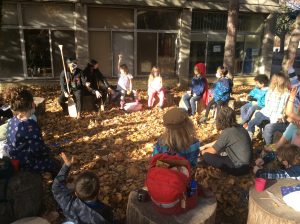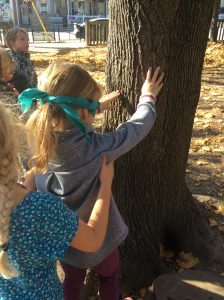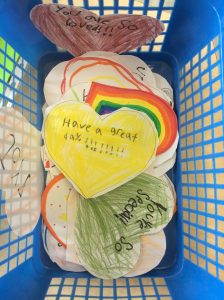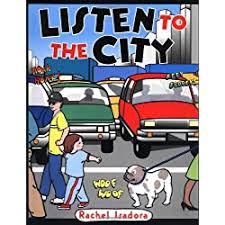My inbox and social media feeds are filled with reminders to take care of myself and to focus on the mental health and wellness of my students and community, and I am trying. This month, I felt the phunk of COVID fatigue. I am working hard to create playful moments of joy, and generate my own light.
My teacher friend, Bruce Gramlich, offered me a new resource called, “Fostering Mindfulness: Building skills that students need to manage their attention, emotions and behaviours in the classroom and beyond,” by Shelley Murphy (2019). In this book, Murphy has curated educator stories and several concrete examples of intentional exercises and activities to support the practice of mindfulness. Murphy believes that in order for educators to be successful at supporting students to be mindful, we must focus on our own practice. Like many educators, I am always paying attention and aware of what is happening to those around me, but mindfulness is about paying attention to myself.
What is Mindfulness?
“Mindfulness is both a way of being in the world and a practice. As a way of being, mindfulness is the quality of presence we bring to everything we do. It describes our innate capacity to pay full and conscious attention to something in the moment. It is the awareness that emerges from paying attention on purpose, in the present moment, and nonjudgmentally to the unfolding of our experience” (Kabat-Zinn, 2013).
Reflecting the Sky:
When I think about mindfulness, I imagine sitting still and meditating, breathing with intention, not thinking about anything, just “be”ing in the moment. Those moments are very rare for me. As soon as I step into the school building, I am pulled into a current that is swift and fast. I am a strong swimmer, but I have to work hard to keep my head above the water. I rarely float, and there are few moments of stillness. I love my work, and I am grateful every day for the creative flow and waves of energy, but I know that the water needs to be calm in order to reflect the sky.
As I begin to cultivate a practice of mindfulness outside of the classroom, I am learning that there are moments of wonder and gratitude in many different activities, including walking in the park, cooking a delicious meal, listening to music, riding my bicycle, playing with my dog, and doing yoga. One of the challenges for me is to re-create these moments in the classroom. Here are some examples of how I am trying to practice mindfulness and honour stillness with/in my Grade 2 students:
Gratitude:
We begin every day outside in a circle. Before we acknowledge the land with respect, gratitude, and a commitment to take action, I invite everyone to take five deep breaths together. We do “Five Finger Breathing,” and use one finger to trace each inhale and exhale around the fingers of the other hand. Acknowledging land includes noticing and paying attention to all of our relatives: the wind, the birds, squirrels, puddles, and roots in our school yard. We recognize the original caretakers of the land and review our understanding that a treaty is a promise. This daily practice of gratitude is an important part of mindfulness and also supports decolonizing pedagogy.

Listen to the City:
As we sit together and breathe, we use our senses to pay attention. I ask students to share what they hear, see, feel, smell. We talk about seasonal changes and transformation. Murphy (2019) calls this practice “Mindful Sensing.” Soundscapes are a dramatic convention that can be used throughout the curriculum, and can be combined with movement. Students use their voices and/or found sounds to tell a story. We have created soundscapes connected to our learning about water and wind. After reading the book, “Listen to the City” by Rachel Isadora, students worked in small groups to create a soundscape about the city and share it with the class.
Blindfold Tree Walk:
In one corner of our school yard, there is a small grove of cedar trees growing together. This area is being cared for and used as an Outdoor Classroom by many educators. One day, we used our sense of touch to do a Blindfold Tree Walk. We worked with a partner to find a special tree. Then, one partner was blindfolded and guided carefully to different trees to touch, until they found their special tree. Before blindfolding students, we talked about what might be challenging for people who are Blind or have low-vision, and how we can support them to walk safely. After participating in this activity, students reflected on the experience, and described what they noticed and how they used their senses to find their special tree. I also tried this activity and was delighted when I reconnected with my tree.

What Does Peace Feel Like?
This activity inspired us to explore another book called, “What Does Peace Feel Like?” by Vladimir Radunsky. This book is filled with the voices of children who use their five senses to describe peace. Students were inspired to write their own descriptions of peace, and used watercolours to paint what peace looks like. We shared our poetry with a special guest who joined us via ZOOM. Donna Jodhan is a disability justice activist who we met ten years ago when she successfully challenged the Canadian government to make websites more accessible for Blind people. It was a wonderful opportunity to celebrate, reflect and recognize the importance of allyship and advocacy.

Loving Kindness:
“Heartprints” are celebrations of when we have been successful at meeting our learning goals. Currently, we are working on the following goals: “I can be a good friend”, “I can keep trying” and “I can solve problems.” After recess, I will often ask students to share a story about when they were a good friend to someone, or when someone was a good friend to them. As they are sharing, I write their story on a heart-shaped piece of paper. These heartprints are hung in our classroom. Heartprints support cooperative learning, encourage the practice of gratitude and sharing appreciation, reinforce positive behaviour, and help us to create an inclusive and kind classroom community.

My teacher friend, Kelly Fricker recently supported her Grade 1/2 students to share random acts of kindness and #passiton. Together, they generated a list of positive messages to encourage the adults in the school building, and wrote them on heart-shaped paper. Kelly filled every mailbox with messages such as, “You’ve got this!”, “You are appreciated! ”, “You are my sunshine!” I was inspired and worked with my own students to fill the mailboxes in my school with messages of loving kindness. It was a wonder-full activity. Pass it on!

